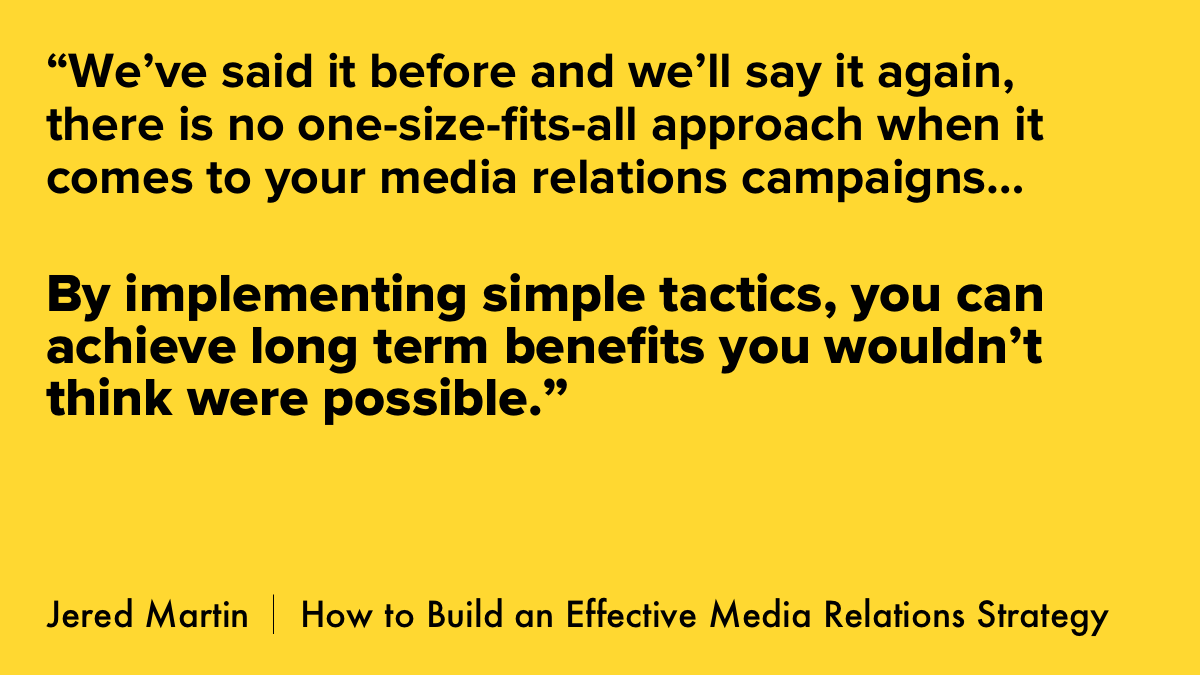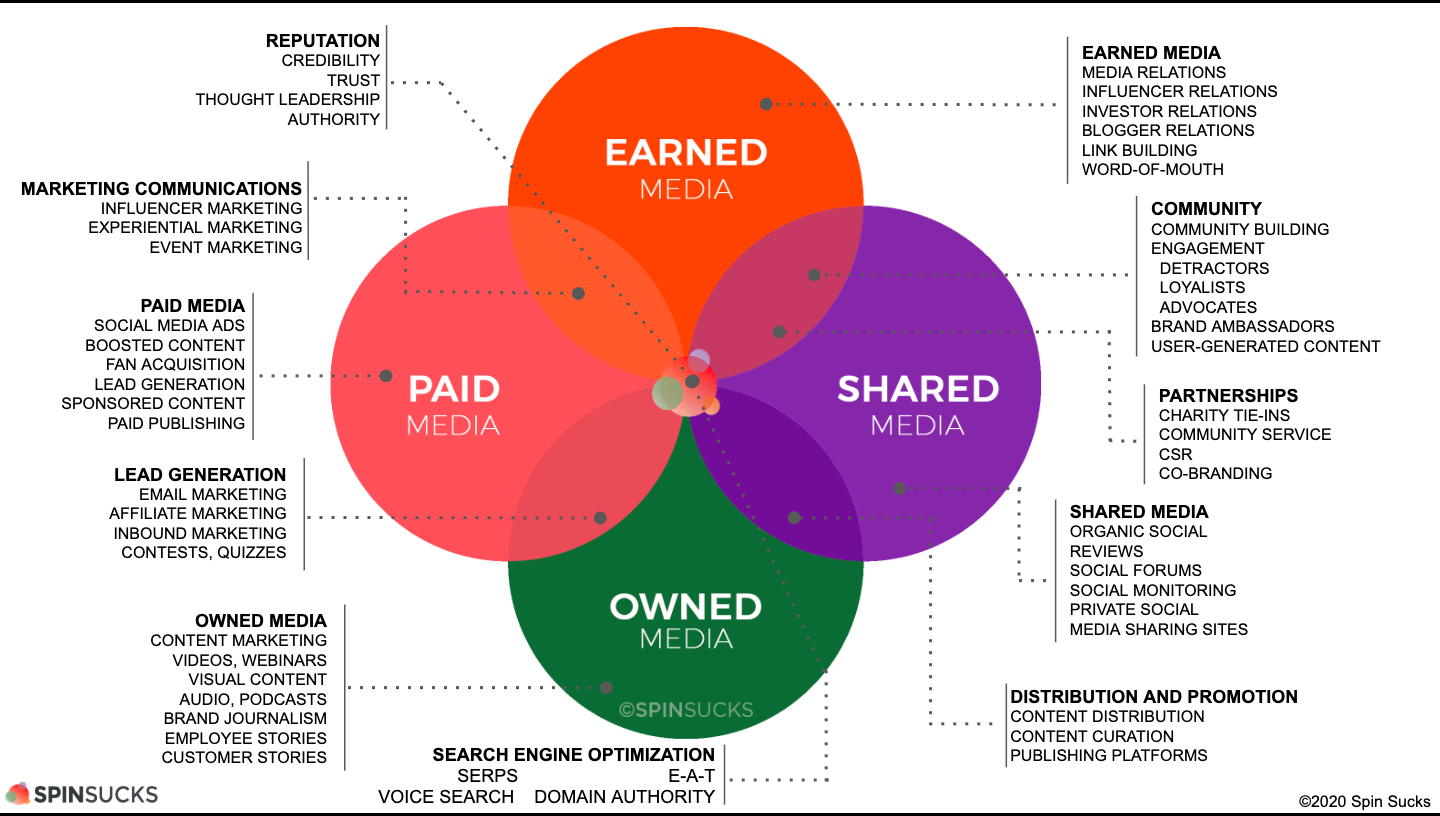How to Build an Effective Media Relations Strategy

We’ve said it before, and we’ll say it again, there is no one-size-fits-all approach when it comes to your media relations campaigns. Each journalist is unique and has specific needs and requirements. By implementing simple tactics you can achieve long-term benefits you wouldn’t think were possible. Below are a few tips, tricks, and industry advice to guide you through this process.
Tips
For starters, know your story and each component that it covers. This is an approach we’ve implemented within our publicist pitch template and one Eliza Bianco also reiterates. She recommends asking yourself the 5 W’s to develop your story. Here are a few she recommends to consider asking yourself:
- Who is this story about?
- When and where is it taking place?
- What is happening?
- Why is it valuable for people to know about it?
A simple practice for making sure you have each of these elements within your pitch is to write them down and fill in the blanks. Yes, it’s simple and obvious but many folks do not follow this process and instead write long paragraphs filled with information that either isn’t valuable or doesn’t touch upon these questions.
The next step is to identify the right journalists who would cover your news. This is one of the most difficult parts of media relations and one of the main reasons we created OnePitch for public relations professionals. Our unique categorization system helps you focus on your pitch and allows us to find the right journalists based on the keywords and context of your news.
TIP: Read their full articles, not just the headlines, and do this regularly. You’ll gain insight into the types of sources and brands they cover but also how the journalist presents them from the publications’ perspective.
It’s also important to know who the journalist is and information about their personal self aside from their professional work. Knowing their location can help inform you WHEN to pitch them. Having an idea of their personal self can help to break the ice when you send them an intro, as we outlined in The Three Main Objectives of Media Relations.
Another point we made in the post, be relationship-oriented. Think about the different ways you can benefit a journalist with information and resources. A lot of times media relations can seem transactional and rarely does that create a foundation for a long-term relationship.
Make sure to have everything prepared ahead of time for a journalist. By everything, we mean have readily available information (e.g. images, quotes, links, etc.) as well as have times available for executives you’re pitching for an interview opportunity, as an example. Many times journalists are working on strict deadlines and don’t have a lot of time to wait for the information you’re attempting to share. By being prepared ahead of time, this ensures the journalists aren’t stuck waiting on you and increases your chances of getting an article placed.
Tricks
According to Haje Jan Kamps, 25% of Twitter’s verified user base consists of journalists and media outlets. That’s roughly 37,500 individual profiles. And believe me, when I say, you NEED to be using Twitter to connect with journalists. You can use internal tools like Twitter lists to curate feeds based on a specific beat or industry, for example, and even follow lists that others have created.
Introductions are a great way to break the ice with a journalist. Be mindful of how you approach this especially since this tactic does not involve pitching journalists but rather providing details about you and why you’re contacting them. Introduce yourself, let them know about your brand, and ask how you can be a resource. Use this as a stepping stone to build a relationship and pitch them once you have valuable news to share.
Lastly, be mindful of the information you’re sharing and make sure it’s relevant. This is one of the most difficult tactics to master and it takes time to know how to present it, to whom, and when you should share it. Start with identifying relevant journalists based on their previous articles. Look for things like the audience type (B2B or B2C) as well as what the subject matter consists of. Rarely, do journalists write the same article more than once but this can give you an idea of what they covered and why your company deserves to have an article written about them.
Industry advice
Media relations is no longer a strategy for public relations professionals. According to PR Week, “Consumers are tuning out ads, both literally and mentally, and instead consuming content that is relevant to them and tells a story.” The need not only to create content but also to market it is becoming more competitive and the focus is gradually shifting from pay-to-play to earned media.
Dozens of journalists we’ve interviewed on Coffee with a Journalist share examples of working with sources and how you should pitch them the types of stories they’re looking for. A piece of advice shared by media relations expert, Michael Smart, is the 80/20 principle. This means to focus your 80% of your time and attention on the top 20% of your media list. This strategy impacts many other fields and departments within an organization and has proven to garner results for those who implement this effectively.
Gini Dietrich from Spin Sucks outlines a model for implementing a successful strategy called the PESO model. It stands for paid media, earned media, shared media, and owned media. By combining these, Gini says,
“When you integrate the four media types, you may find you also have influencer engagement, partnerships, and incentive programs that extend beyond your internal walls.”

Gini recommends starting with owned media and building your strategy from there. Regardless if you have the ability to create content, share it, earn it, or pay for it it’s important to know implementing even 2 of these tactics together can help you increase your brand awareness and drive more leads to your website.
________
No matter what, make sure you provide valuable information each time you contact a journalist. Be a resource for journalists by knowing your story, knowing who they are and what they write about, and by being prepared.
Whether you’re just starting out in media relations or a seasoned veteran, all of the tactics we’ve outlined in Your All-Inclusive Guide to Media Relations will help guide you from start to finish. Learn about the difference between PR and media relations, the types of media to target, the main objectives you should focus on, and how to build a winning strategy.
Want more blogs like this?
Fill out the form below to subscribe to our newsletter and receive emails with the top blogs from The TypeBar!
